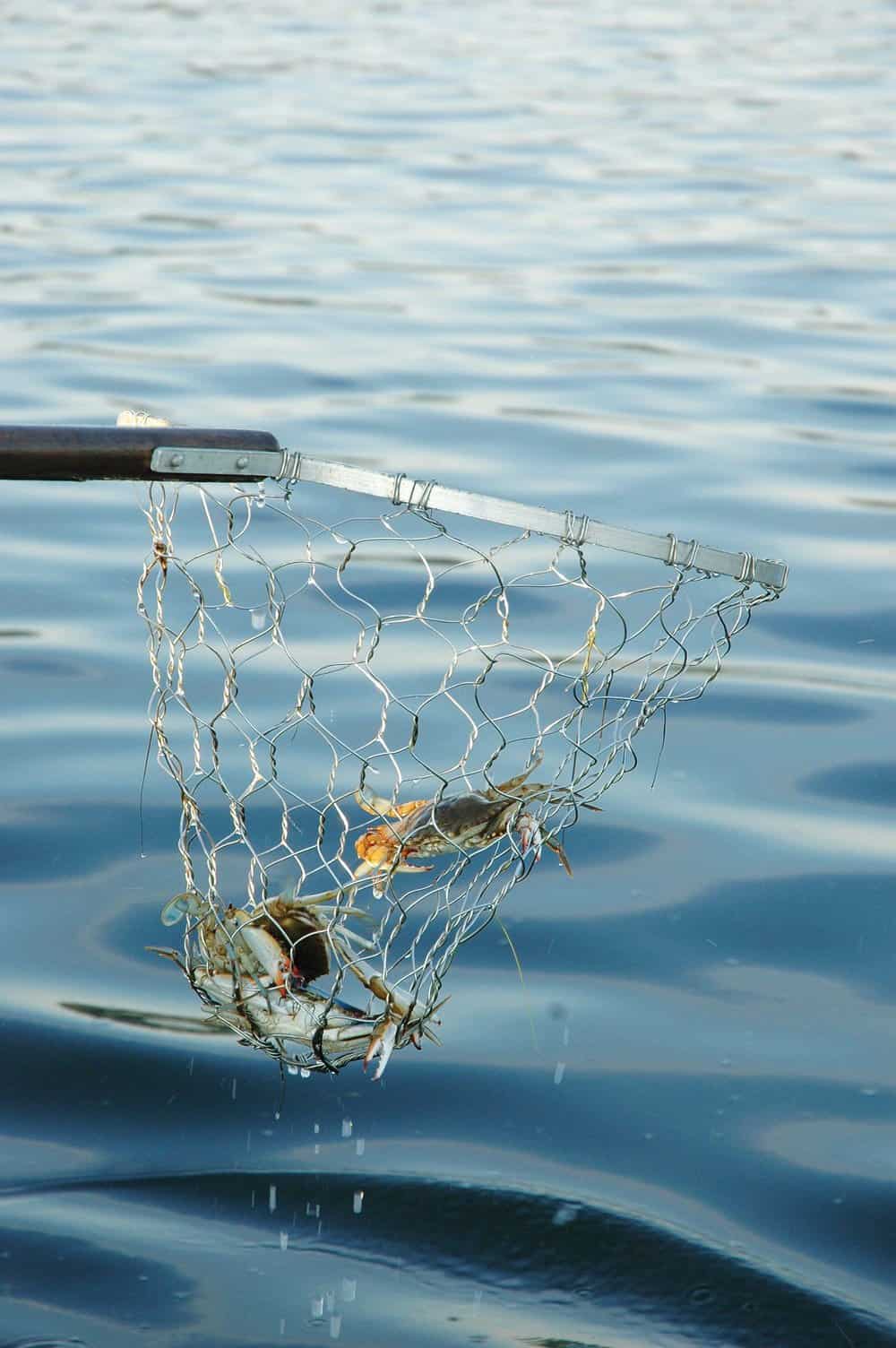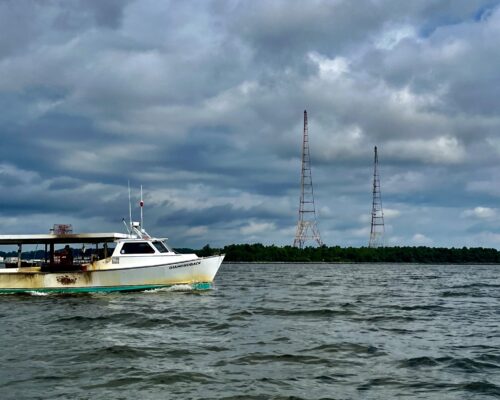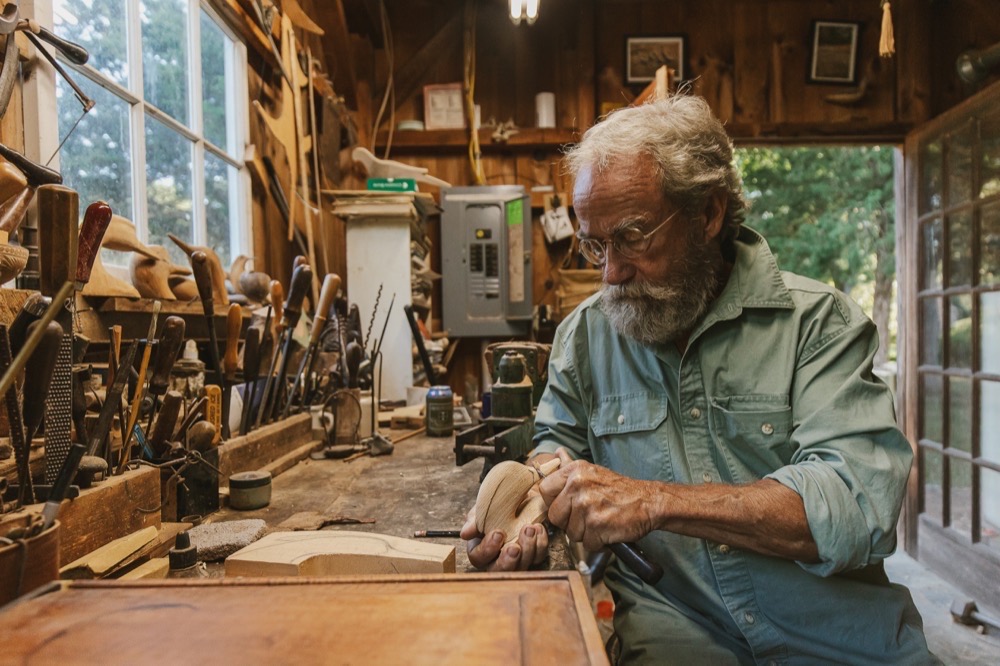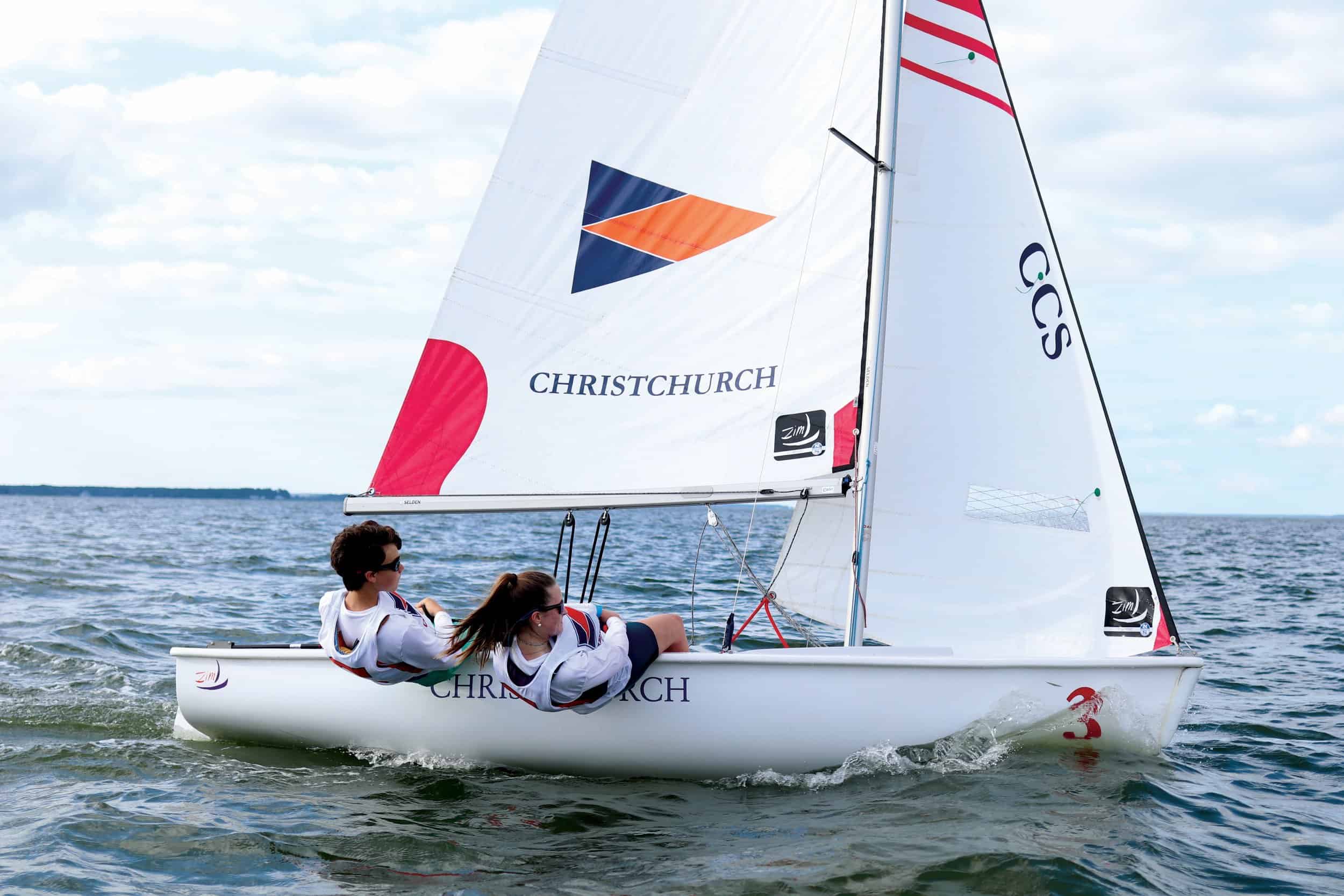photo by chris d. dollar
I don’t know this for a fact but I know it to be true: Chesapeake blue crabs just taste better than their southern cousins. I reckon it’s that perfect combination of salt and fresh in our Bay waters that gives our pugnacious crustaceans their sweet meat. Or maybe it’s the Old Bay, or J.O. or Wye River seasoning if you prefer, and cold beer. Plenty of both definitely helps in my appreciation.
I’ve lost count of how many crabs I’ve eaten and caught over the years. Still, each one is as mysterious as the first, especially when holding fast to a baited trotline. Claw colors are fiercely beautiful and rarely duplicated; their chiseled armor wards against the hardships of life in the Chesapeake. I also love the lore and ecology behind crabs and crabbing. What do they do down there all day long?
Crabs are feisty, tough and resilient, with a hardcore survival instinct. We owe the Bay’s native peoples our gratitude for introducing the first European settlers to this great treat. You’re forgiven if you don’t know the various names assigned to Callinectes sapidus, which literally means “savory beautiful swimmer.” Here’s the list: Jimmy—male; Sally—immature female; Sook—mature female; Sponge—egg-laden female. And how about the nomenclature for the soft shells? Here’s that lineup: Hotel—4 ½-5 inches; Prime—5-5 ½ inches; Jumbo—5 ½-6 inches; and Whale—6-plus inches. We haven’t even broached the crab shedding names. All are quintessential Chesapeake vernacular, and I probably forgot one or two.
In recent years, there has been a drive to elevate oysters, especially farm-raised bivalves, to a higher epicurean status. While I hold both shellfish in high esteem, crabs will always be more popular and more representative of the Bay lifestyle to me. Ever sat down at a picnic table for hours on end picking oysters? How about trying to catch them off a pier? Oyster bumper sticker? And there’s this—In a national survey “Crabs and Baltimore” beat out “Philly and Cheese Steaks” as Most Iconic Food-City Combo. I rest my case.
It’s About the Gear
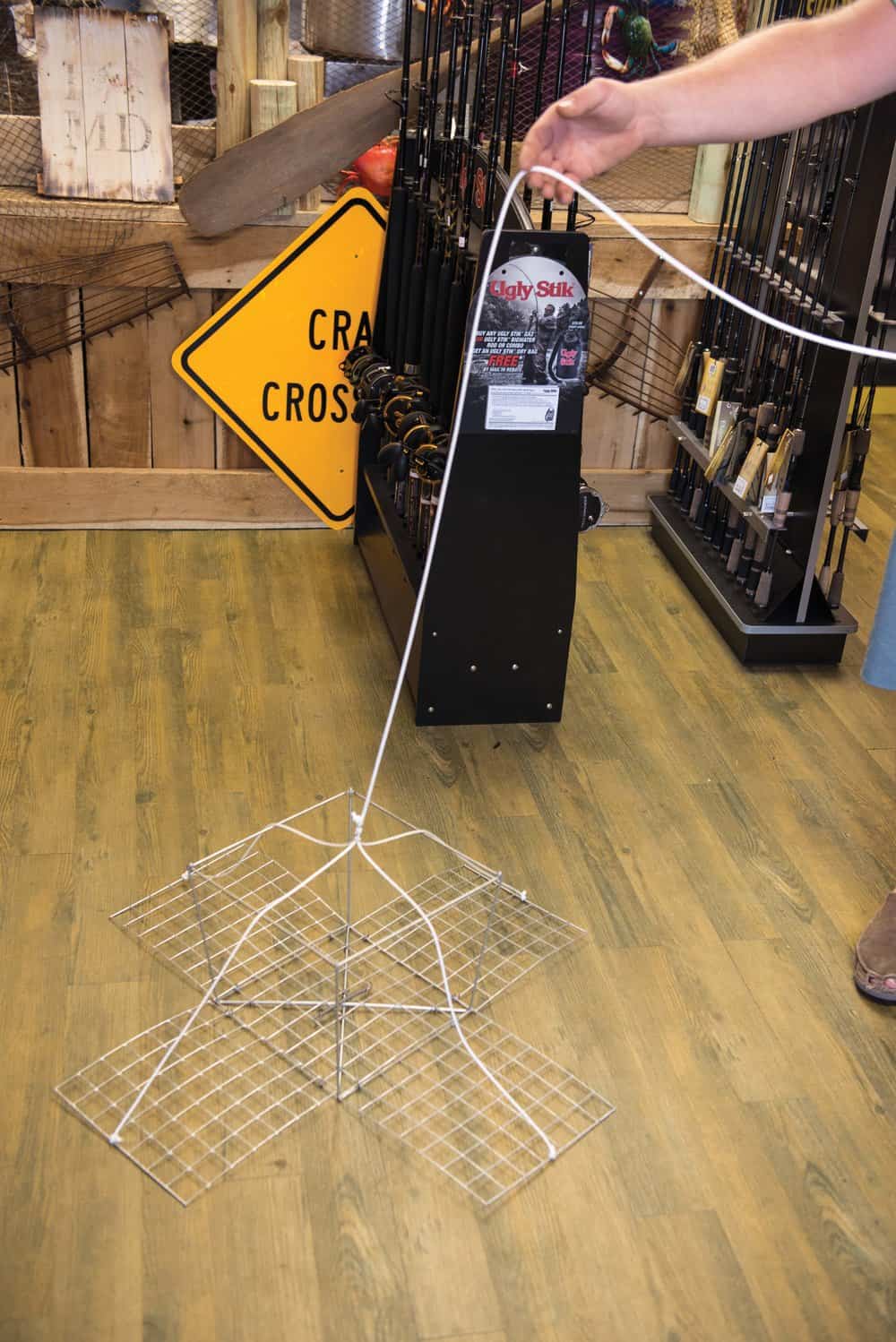
Recreational crabbers run the gamut in terms of how seriously they pursue their hard-shelled quarry. The simplest way to catch crabs is a handline. For a few bucks you can purchase a commercially made throw-line; it’s a light-wire triangle with a weight molded to it. At the tag end of that line a pin is attached—it looks like a super-sized safety pin. That’s where you stick the bait, usually a chicken neck but sometimes a chunk of fish, or fish-head.
You can make your own handline starting with a wooden dowel or even a pool noodle for a storage handle. six-inch sections seems to be about the minimum length, especially if crabbing with kids. Then tie a lead sinker (3/4 to 1.5 ounces depending on the depth and current) to about 20 feet of nylon line or cotton string. Simply tie the bait to the end of the line, and you’re in business.
When a crab is on the line, a patient, stealthy retrieve is critical. Good luck with that with young first timers. Rig at least a half-dozen per kid or risk mutiny. Vary the depth and location, and change your bait every 20 minutes or so.
Collapsible traps, sometimes called snap pots, are metal, four-paneled, and sit on the bottom, baited with a chicken neck. A line runs from it to a float. You literally “snap” the apparatus up, and the crab, clinging to what it thought was an easy meal, is stuck inside. Some people like ring traps, a similar version that are somewhat easier to stow. Expect to pay about $10-$15 each, and you’ll need about a dozen to entertain kids or newcomers. However, if you want a decent shot at landing a few dozen crabs to steam up, go with at least 20 traps.
By far my favorite crabbing method is also the most efficient for us chicken neckers: the trotline. (Some pronounce it “troutline.”)
It’s the most labor-intensive and expensive of the basic sporting crab methods. Typically, a trotline is made up of 3/8- or 1/4-inch, three-strand nylon line in lengths of 300 feet to 1,200 feet. (1,200 feet is the maximum allowed for recreational trot lines in Maryland. It’s 300 feet in Virginia.) Back in the day, it was tarred sisal, but I don’t even know if they make that anymore. You can make one yourself or buy them pre-rigged—weights, snoods, floats and all.
What’s a snood? It’s a six-inch shot of baited bungee cord dropping down from the main line. They’re standard issue on all commercial lines, and many sport crabbers have followed suit. Snoods hold onion bags loaded with razor clams, arguably the best trotline bait in recent years. They work like a champ, but compared to chicken necks, they’re expensive and time-consuming to rig. A few people still bait with salted eel or bull lips but most crabbers have switched to more convenient baits.
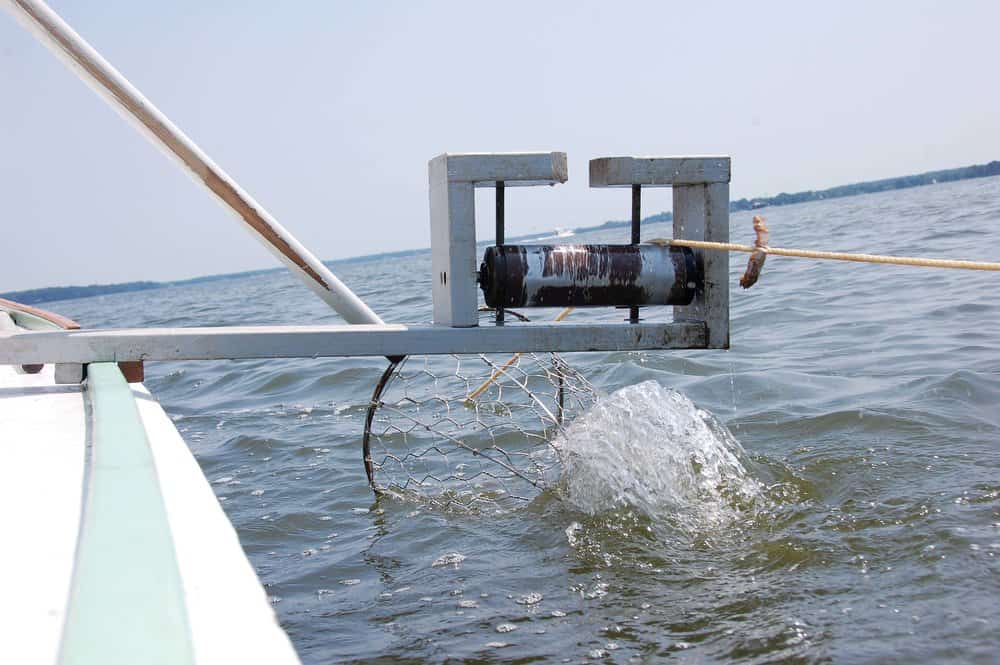
At each end of the line, a two-foot run of chain is secured to an anchored float or buoy with a bronze snap swivel, alerting the crabber that the end of the trotline is near. Hence another colloquialism: “chain crab!” I’ve seen anchors fashioned from sash weights or flywheels and other engine parts. Standard mushroom-style anchors work fine, but avoid fluke anchors because they can hang up on the bottom when you try to adjust the lay of the line. And at some point, you’ll have to move your lay. Lastly, the roller arm extends across the gunwale (or wash board) over the water to allow the trotline to roll across it. Crabs being the gluttonous crustaceans they are, will cling to bait like Charlie Sheen to fame. Roller arms range from homemade PVC to the high-dollar stainless steel, gimbal mount that fits into a rod holder.
The fact that I find crabs as tasty as they are fascinating is an odd juxtaposition. Alien-like zoea float around the Atlantic coastal waters for weeks, morph several times before drifting back into the Bay where they seek protection in marshes and underwater grass beds. Juvenile crabs face a daunting road to maturity with many threats and hazards. Chief among them are harsh winters and many predators, including people. It’s no wonder crabs pinch. The journey from microscopic larvae to full-grown adult is a marvelous achievement.
We can’t celebrate the Bay’s most valuable commercial species and fail to mention conservation. Many crab lovers are aware of the tension here. We love our summer rite of crab feasts yet recognize catching too many can hurt the resource. In Maryland, recreational crabbers are prohibited from keeping female hard crabs. Virginia allows sport crabbers to keep immature females with a five-inch minimum size. As it is or was, most sport crabbers kept only males, and then just enough to treat themselves and family to a modest feast. Commercial crabbers in Maryland are allowed limited amounts of females to fill out the canned crab meat inventory.
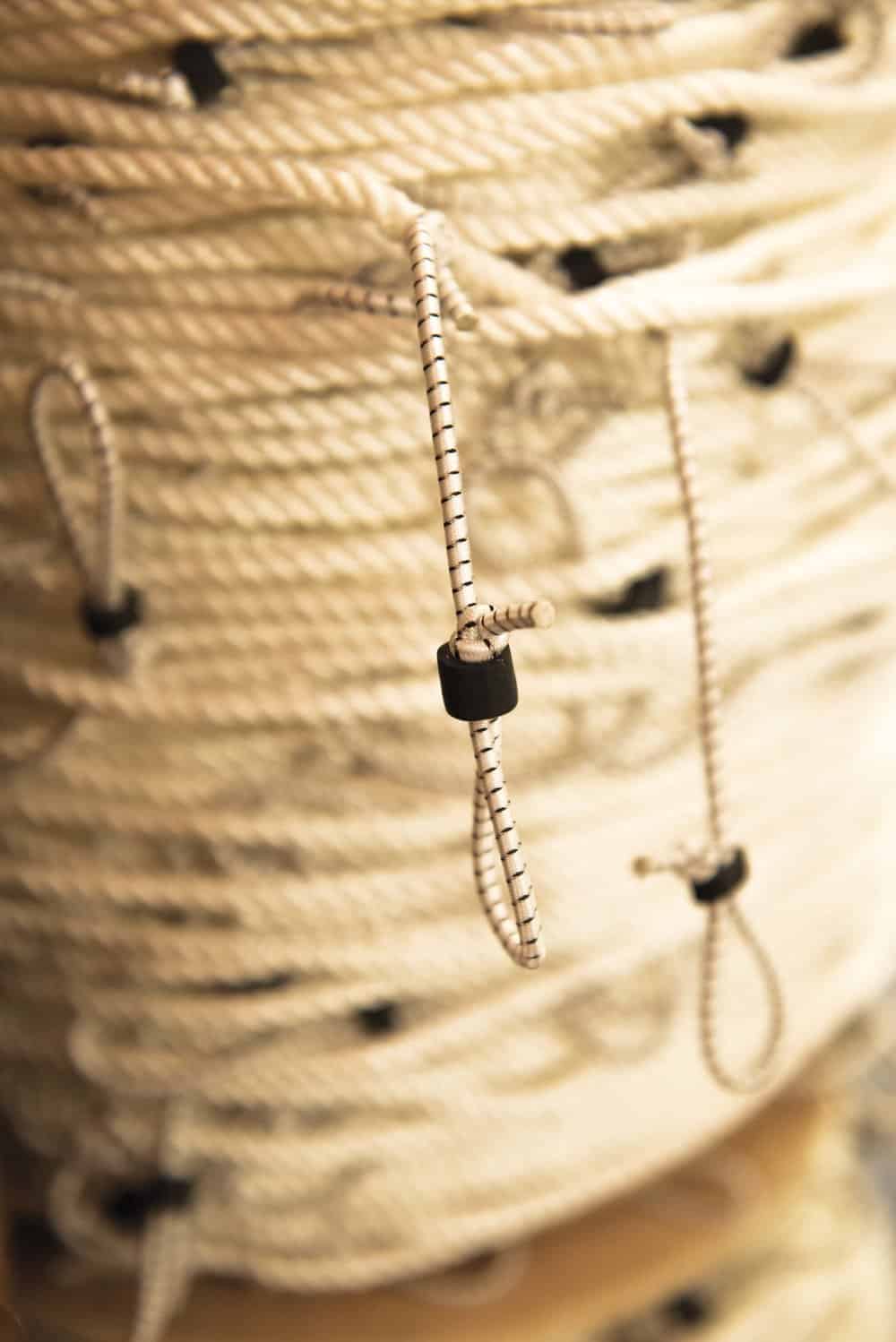
Fishery managers in both Bay states as well as the Potomac coordinate catch rules and take a risk-averse approach to scale back on the harvest when necessary, especially to protect females and immature young crabs. Perhaps the best tool managers have to assess the Chesapeake blue crab population is the annual Winter Dredge Survey, conducted since 1990 by the Maryland Department of Natural Resources and Virginia Institute of Marine Science. From December to March, researchers sample 1,500 sites in the Bay states.
While there is glory in a full bushel there’s also reward aplenty in the process itself. I’ve witnessed all manner of inspiration and humorous insight into the human condition. Magnificent sunrises reaffirm why it’s good to be alive, bearing witness as nature stirs to greet a new day. Or seeking refuge in a quiet creek to escape an unrepentant wind, where you’re rewarded with fat, succulent black-bellied males with claws
like vises.
And then there’s the comical irate waterfront homeowner, plodding down his dock, resplendent in his sleepwear, fist clenched and obscenities spilling from his mouth like oxygen. I can only surmise he mistakenly thought his millions extended to the water and my boat. A cupped hand to my ear, a shrug of the shoulders and a friendly wave had the desired effect.
Or the time running a summer trotline trip for middle schoolers on the Patuxent when I witnessed them recover from a seemingly irretrievable state of catatonia born of boredom and humidity. Slumped against the deadrise’s railings, they simultaneously sprang to life like kittens hopped up on caffeinated catnip when the song began. In horrifyingly perfect choreography fifteen kids gesticulated and gyrated as I watched in jaw-dropping disbelief, asking “What the X#$& is happening…” Their inspiration? Why the Macarena, of course.
I only burden you with this treacherous tale from long ago because ever since that bizarro morning, I cannot bait a trotline without humming a bar of that corrupt song. And now it’s my gift to you. Wishing you good crabbing!

